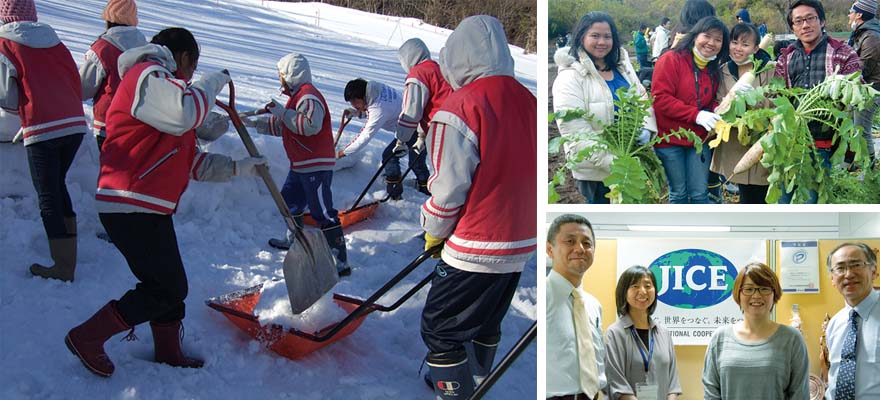Home > Highlighting JAPAN >Highlighting Japan November 2013>40th Year of ASEAN-Japan Friendship and Cooperation
Highlighting JAPAN
40th Year of ASEAN-Japan Friendship and Cooperation
JICE
Sharing the lessons learnt from disasters

The region occupied by ASEAN countries is one of the most susceptible to natural disasters such as typhoons and earthquakes, a characteristic that is shared with neighboring Japan. Disaster preparedness strategies are a pressing issue and high on the agenda for ASEAN countries. The Japanese government is investing a lot of effort in its contribution to disaster preparedness strategies in ASEAN countries. Disaster strategy is an important field where Japanese know-how can be used to the full.
Japan International Cooperation Center (JICE) is a foundation commissioned by the administrative agencies of Japan, international organizations and foreign governments, to carry out international cooperation and exchange projects. In particular, JICE focuses on human resources development, holding seminars, managing exchange student initiatives, translation and interpreting services, international training programs, and providing support for development education and technical development projects. Among international cooperation and exchange projects implemented by JICE, there are many technical training and exchange programs that focus on natural disasters such as flooding, earthquakes, tsunami, and disaster prevention and reduction.
We talked with Kazuo Nagayama, director of the Tohoku branch of JICE.
Mr. Nagayama entered JICE immediately after graduating from Toyo University in 1992, looking for a job connected with international cooperation. Possessing a strong desire to create a world of peace and equality, Nagayama has mainly been connected with international training programs and exchange projects in his career of more than 20 years. Of such exchange projects, Nagayama has focused on implementation of those directed at young people from ASEAN countries. Through various exchange programs contained in these exchange projects, young people from ASEAN countries and Japan alike have been able to further mutual understanding and friendship.
With recovery efforts still ongoing in Tohoku in the wake of the Great East Japan Earthquake Disaster of March 2011, Nagayama is active in communicating the effort being invested into recovery and the reality of the disaster area to young people of the world.
"We want people to see the reality of the disaster area with their own eyes and make their own decision as to whether it is safe or not. Following the disaster, people from overseas are prone to think that it's all over for Japan. But actually, that's really not the case. We show participants photographs of the disaster area; for example, Minami Sanriku Town and of people working on recovery. Participants are encouraged to get first-hand experience of local industries such as fishing and to talk with local people working in farming and fisheries. People in the disaster area want to show that they are in good spirits and feel it is their mission to communicate the harshness of the disaster to others. Many young people found that the reality of the disaster area was very different from what they had seen on television. These returnees went back to their local schools and are talking about what they have seen in Japan."
Since 2012, 8,300 participants from 41 countries, including ASEAN countries, eight countries from the South Asian Association for Regional Cooperation (SAARC), East Timor, China, Korea, Taiwan, Mongolia, the US, Canada, and 14 Pacific Island States, visited the areas affected by the Great East Japan Earthquake Disaster.
Recovery work was helped greatly by enthusiastic participants. They not only learned the many lessons gleaned in disaster prevention but were also able to study about the reality of the damage. Participants feel extremely happy about their experience and this can be seen from the fact that 99% of them said that they gained a deeper understanding about the area affected by the disaster and would like to visit again.
© 2009 Cabinet Office, Government of Japan






